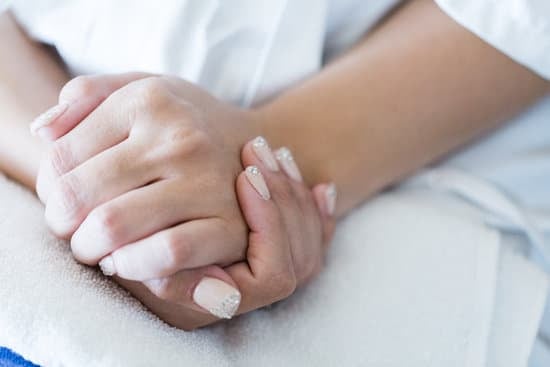How many cakes are at a wedding is a question that has been debated and considered by couples around the world for centuries. The tradition of having a wedding cake holds great significance in many cultures, with its roots dating back to ancient Rome. In this section, we will delve into the history and meaning behind wedding cakes in various cultures, shedding light on the symbolic importance of this sweet tradition.
Wedding cakes have evolved over time, taking on different styles and forms to reflect changing tastes and trends. From traditional tiered cakes adorned with intricate designs to modern naked cakes and trendy dessert bars, there are countless options for couples to choose from when it comes to their wedding confection. We will explore the popular wedding cake styles that are embraced by couples today, highlighting the diversity and creativity in the world of wedding desserts.
When it comes to deciding how many cakes to have at a wedding, there are several factors that come into play. Guest count, budget constraints, and personal preferences all influence this decision. In this article section, we will analyze these influencing factors and provide insight into how couples can make the best choice for their special day.
Popular Wedding Cake Styles
Traditional tiered cakes have long been a staple at weddings, symbolizing the union and prosperity of the newlyweds. These multi-layered confections are often elaborately decorated with intricate designs, sugar flowers, and fondant details. On the other hand, modern naked cakes have gained popularity in recent years for their rustic and minimalist aesthetic.
These unfrosted cakes showcase the natural beauty of the cake layers and are often adorned with fresh flowers or fruits. Lastly, trendy dessert bars offer a unique alternative to traditional wedding cakes, featuring an array of sweet treats such as cupcakes, macarons, and cake pops.
When it comes to deciding on the number of wedding cakes to have at a wedding, there are several factors that come into play. The guest count is one of the primary considerations – larger weddings may require multiple cakes to ensure there is enough for everyone.
Budget also plays a significant role; couples need to balance their desire for an elaborate dessert display with their financial constraints. Additionally, personal preferences and wedding theme or style can influence whether couples opt for a traditional tiered cake, a modern naked cake, or a dessert bar setup.
Statistics show that the average number of cakes at a wedding varies based on different factors such as geographic location and cultural traditions. In some regions or cultures, it is customary to have multiple smaller cakes as opposed to one large cake.
For example, in certain Asian countries like China and Japan, it is common to serve several different flavored cakes at weddings as part of the tradition. Conversely, in Western cultures such as the United States and Europe, the prevalence of one large wedding cake has historically been more common.
Factors Influencing the Number of Cakes
When it comes to determining the number of cakes to have at a wedding, there are several key factors that play a significant role in this decision. These factors include guest count, budget, and personal preferences, all of which can influence whether a couple opts for a single large wedding cake or multiple smaller cakes.
Guest Count
The size of the guest list is one of the most important considerations when determining how many cakes to have at a wedding. A larger guest count may necessitate having multiple cakes to ensure that there is enough dessert for everyone in attendance. On the other hand, a smaller wedding with fewer guests may only require a single cake, or even just a small cutting cake for the couple.
Budget
Budget is another significant factor that influences the number of cakes at a wedding. Cakes can be an expensive component of wedding planning, and couples with limited budgets may need to carefully consider how many cakes they can afford. In some cases, opting for multiple smaller cakes instead of one large cake can be more cost-effective while still creating an impressive dessert display.
Personal Preferences
Finally, personal preferences play a key role in determining the number of cakes at a wedding. Some couples may have their hearts set on a traditional tiered cake as the centerpiece of their reception, while others may prefer the modern trend of dessert bars or non-traditional options such as cupcakes or macarons. Understanding what type of dessert best reflects their style and taste will ultimately guide couples in making decisions about how many cakes to have at their wedding.
As couples plan their weddings and make decisions about their desserts, it’s important for them to carefully consider these factors in order to determine the number of cakes that will best suit their needs and preferences. By taking into account guest count, budget constraints, and personal style, couples can ensure that they have the perfect sweet ending to their special day.
Traditional vs Non-Traditional Approaches
When it comes to wedding cakes, the traditional approach has always been to have one large, tiered cake as the centerpiece of the reception. This tradition dates back centuries and symbolizes unity and the first shared meal as a married couple. However, in recent years, there has been a shift towards non-traditional approaches, with many couples opting for multiple smaller cakes or dessert bars instead.
In the traditional approach, a single large wedding cake is often elaborately decorated and serves as a focal point at the reception. This type of cake is typically made up of several tiers, each one more ornate than the last, and is often a show-stopping element of the decor. Couples may choose classic flavors like vanilla or chocolate for their traditional wedding cake, or opt for more unique and personalized flavors that reflect their tastes and personalities.
On the other hand, the modern trend of multiple smaller cakes or dessert bars offers couples a more diverse and customizable option for their wedding desserts. This approach allows for different flavors and styles of cakes to be showcased, catering to a wider range of tastes among guests. Additionally, dessert bars can include a variety of treats such as cupcakes, cookies, and pastries, providing a more interactive and visually appealing display.
Ultimately, whether to go with one large traditional wedding cake or multiple smaller cakes comes down to personal preference. Some couples may prefer to stick with tradition and have a grand centerpiece cake, while others may embrace the opportunity to showcase an array of desserts that better reflect their individuality and tastes as a couple.
Regardless of which approach is chosen, what matters most is that the desserts complement the overall theme and style of the wedding while satisfying sweet cravings for all guests in attendance.
- Traditional tiered wedding cake
- Modern trend of multiple smaller cakes
- Dessert bars offering various treats
Multi-Cultural Perspectives
Wedding cakes are central to the celebration of marriage in many cultures around the world. The significance of wedding cakes varies from one culture to another, with each having its own unique customs and traditions. In Western cultures, the wedding cake is often a multi-tiered confection that serves as a centerpiece for the reception.
This symbolizes prosperity and good fortune for the couple. However, in other parts of the world, such as India and China, different customs are observed when it comes to wedding cakes.
In India, for example, wedding cakes or desserts hold great cultural significance. One popular Indian tradition involves a sweet dish called “mithai” being presented to guests at the end of the wedding ceremony. Mithai is made from a variety of ingredients including condensed milk, clarified butter, sugar, and flavorings like cardamom and saffron.
In China, red bean paste-filled buns known as “baozi” are commonly served at weddings to symbolize good luck and happiness for the newlyweds. These examples demonstrate how different cultures have their own unique ways of incorporating sweet treats into wedding celebrations.
The significance of how many cakes are present at a wedding can also be influenced by cultural beliefs and traditions. In some cultures, such as those found in certain African countries, it is customary to have multiple smaller cakes displayed at various locations throughout the venue rather than one large cake.
Each cake may have its own symbolic meaning or represent different aspects of married life such as fertility, unity, and longevity. This serves as a visual representation of the couple’s journey together and their connection to their cultural heritage.
| Culture | Approach to Wedding Cakes |
|---|---|
| India | Mithai presented at end of ceremony |
| China | Baozi served to symbolize good luck |
| African Countries | Multiple smaller cakes to represent aspects of married life |
The Role of Dessert Tables
Alternative to Traditional Cake
In recent years, dessert tables have become a popular alternative to the traditional wedding cake. These tables typically feature an array of sweet treats such as cupcakes, cookies, macarons, and other bite-sized desserts. The appeal of dessert tables lies in their versatility and ability to cater to a wide range of tastes and dietary restrictions. With more couples opting for non-traditional wedding elements, dessert tables offer a modern twist on the classic cake-cutting ceremony.
Impact on Overall Number of Cakes
The introduction of dessert tables has had a significant impact on the overall number of cakes at weddings. Instead of one large wedding cake, couples now have the option to include multiple smaller cakes as part of their dessert spread.
This allows for greater variety and customization, as each cake can be tailored to different flavor profiles or themes. As a result, the number of cakes at a wedding has increased as couples embrace the idea of offering a diverse selection of sweet treats for their guests.
Customization and Personalization
One of the key advantages of dessert tables is the opportunity for customization and personalization. Couples can work with their baker or caterer to curate a selection of desserts that reflects their personalities and preferences. From themed cupcakes to artisanal pastries, dessert tables provide a canvas for creative expression and unique culinary experiences. This level of customization adds an extra layer of sentimentality to the wedding celebration, making it truly memorable for both the couple and their guests.
Practical Considerations
When it comes to deciding how many cakes to have at a wedding, practical considerations and personal preferences play a significant role in the decision-making process. Couples must take into account factors such as guest count, budget, venue size, and overall wedding theme. Here are some practical considerations and advice for couples on how to determine the number of cakes for their wedding:
Factors to consider:
- Guest Count: The number of guests attending the wedding will directly influence how many cakes are needed to ensure that everyone gets a slice of cake.
- Wedding Budget: The budget allocated for the wedding cake(s) will dictate whether a couple can afford one large cake or multiple smaller cakes.
- Venue Size: The size of the wedding venue may impact the display and placement of the cake(s), affecting the decision on having one large cake or multiple smaller ones.
- Overall Wedding Theme: The theme and style of the wedding may influence whether a traditional tiered cake, a modern naked cake, or a dessert bar is more suitable.
Planning and Ordering Wedding Cakes
When it comes to planning the perfect number of cakes for your wedding, there are several factors to consider. The first consideration is the size of your guest list. As a general rule, you will need approximately one slice of cake per guest. However, if you have a smaller guest count but still want a variety of cake flavors, you may opt for a smaller tiered cake supplemented by sheet cakes in various flavors.
Another important factor to consider is your budget. Multiple smaller cakes or an elaborate dessert table can be more costly than a traditional tiered cake. It’s essential to discuss your budget with your baker and explore different options that align with your financial constraints while still achieving your desired aesthetic.
When working with a baker, it’s crucial to ask the right questions to ensure that you are both on the same page regarding the number of cakes for your wedding. Inquire about their experience in creating multiple cakes or designing dessert tables, and ask if they have any insights or recommendations based on their expertise. Additionally, discuss delivery logistics and how the presentation of the cakes or desserts will be handled at the wedding venue.
Ultimately, determining the perfect number of cakes for your wedding is a personal decision that should reflect both practical considerations and your unique preferences. Whether you choose one grand wedding cake, an assortment of smaller cakes, or an elaborate dessert display, the most important thing is that it complements the overall vision for your special day.
How Many Cakes Are at a Wedding
In conclusion, the decision on how many cakes to have at a wedding is a multifaceted one that depends on a variety of factors. The tradition of wedding cakes has deep roots in various cultures, and the significance of the number of cakes can differ significantly from one region to another. From traditional tiered cakes to modern dessert bars, there are numerous popular wedding cake styles that couples can choose from, each with its own unique appeal.
Factors such as guest count, budget, and personal preferences all play a role in determining how many cakes will be present at a wedding. While the traditional approach involves having one large wedding cake, the modern trend often sees multiple smaller cakes or even dessert tables taking center stage.
It’s essential for couples to consider practical considerations when deciding on the number of cakes for their wedding, and seeking advice from experienced bakers can help ensure they make an informed decision.
When planning and ordering wedding cakes, couples should carefully consider their options and ask relevant questions when working with a baker. Ultimately, whether they choose to have one grand cake or several smaller ones, it’s crucial for couples to select what best reflects their personal style and tastes. With careful consideration and thoughtful planning, couples can find the perfect number of cakes to make their special day truly unforgettable.
Frequently Asked Questions
Why Are There Two Cakes at a Wedding?
Two cakes at a wedding are often a traditional part of the celebration. The main cake, typically a multi-tiered confection, is for the ceremonial cutting and serving. The second cake is often a smaller, simpler one for the guests to enjoy.
How Many Cakes Are in a Wedding?
The number of cakes at a wedding can vary depending on the couple’s preferences and cultural traditions. In addition to the main wedding cake, there may be groom’s cakes, dessert tables with various sweet treats, or even smaller individual cakes for each table.
How Many Cake Tiers for 100 Guests?
The number of cake tiers for 100 guests depends on the overall design and size of the cake. Typically, a three-tiered cake could serve about 50-100 guests, while larger weddings might require four or more tiers to accommodate everyone. Ultimately, it comes down to how generous the servings are and the style of service chosen by the couple.

I have been involved in marriages for over 20 years helping couples and singles understand more about them.





